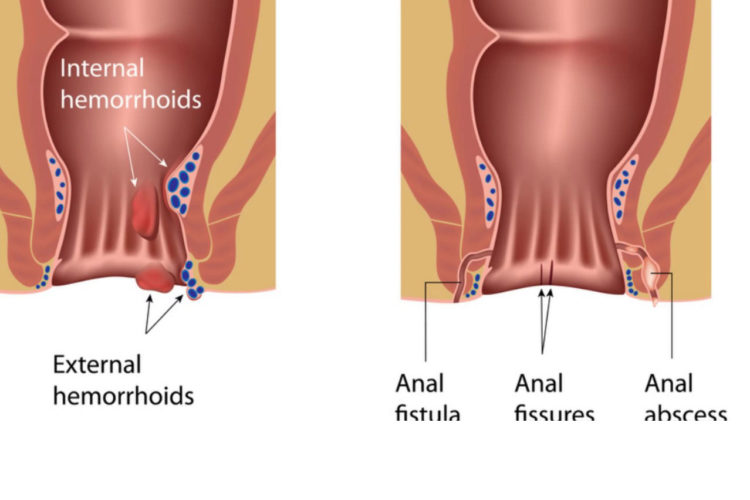What is an anal fissure?
An anal fissure is a split in the skin at the opening of the anus, which leaves exposed some of the muscle fibres of the anal canal. Pain results from the recurrent opening of the wound when the bowels are opened, and it is often accompanied by bleeding. In addition, the inner circle of muscle in the anal canal (called the internal sphincter) goes into spasm: this makes the pain worse and can prevent healing. Anal fissures are different from haemorrhoids and have no relationship with cancer.
What are the symptoms of an anal fissure?
- Pain on passing faeces, which might persist for minutes or hours afterwards. The pain is typically sharp and knife-like rather than an ache.
- Bright-red bleeding when you pass faeces.
- If the fissure is long-standing, a skin tag at the site of the fissure can develop.
What is an Anal Fistula?
An anal fistula is an abnormal connection between the anus and the skin. On the surface of the skin around the anus, one or more ‘holes’ might be evident. These are the external openings of thin passages that tunnel down towards the anal canal.
What causes an Anal Fistula?
An anal fistula is usually the result of a previous abscess in the area, which has been drained (of pus) but does not fully heal. This results in persistent or intermittent discharge of pus, blood or mucus. Usually, there is no much pain, although an abscess can sometimes recur.
What is a Pilonidal Sinus?
Pilonidal means a ‘nest of hairs’.
A sinus tract is a small abnormal channel (like a narrow tunnel) in the body. A sinus tract typically goes between a focus of infection in deeper tissues to the skin surface. So the tract may discharge pus from time to time onto the skin.
A pilonidal sinus is tract which commonly contains hairs. It occurs under the skin between the buttocks (the natal cleft) a short distance above the anus. The sinus track goes in a vertical direction between the buttocks. Rarely, a pilonidal sinus occurs in other sites of the body.
What causes a Pilonidal Sinus?
The exact cause is not clear. There are various theories. For example, one theory is that the problem may develop from a minor congenital or hereditary abnormality in the skin of the natal cleft. This may explain why the condition tends to run in some families. Part of the abnormality in this part of the skin may be that the hairs grow into the skin rather than outwards.
What are haemorrhoids?
Haemorrhoids are swellings on the inside of the anal canal, the short muscular tube that connects the rectum (back passage) with the anus. They are round swellings that can reach the size of a grape. They are not varicose veins and are also known as ‘piles.’
Symptoms
- Bright red blood from your anus
- Pain and discomfort after you have opened your bowels
- A slimy discharge of mucous, which may cause itching
- A feeling that your bowels haven’t emptied completely
- Soiling underwear (with third and fourth grade hemorrhoids)
Bright red blood from your anus is most likely to come from haemo

 Bengin Anorectal Problems
Bengin Anorectal Problems
 Endoscopic Pilonidal Sinus Treatment (EPSIT)
Endoscopic Pilonidal Sinus Treatment (EPSIT)
 VAAFT Information Booklet
VAAFT Information Booklet
 What is THD?
What is THD?
 ColoNext
ColoNext
 Nutrition in Cancer Patients
Nutrition in Cancer Patients







